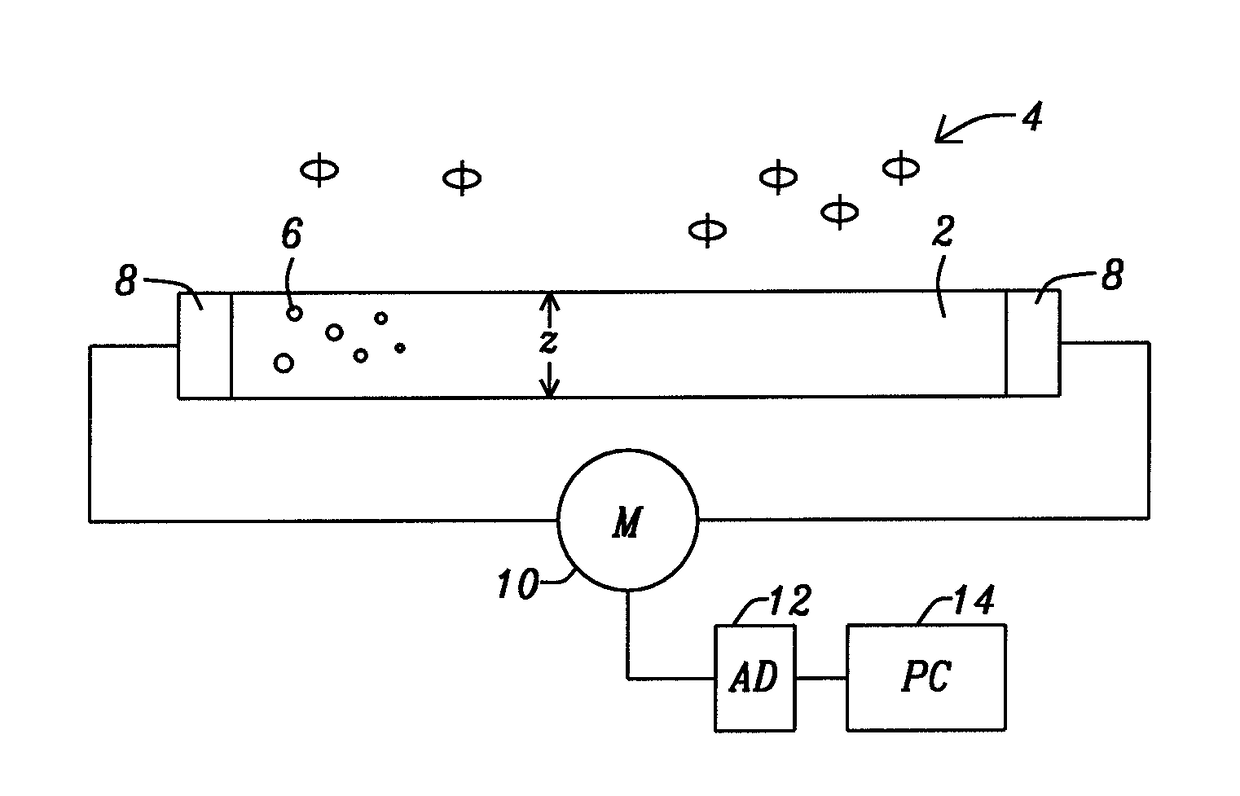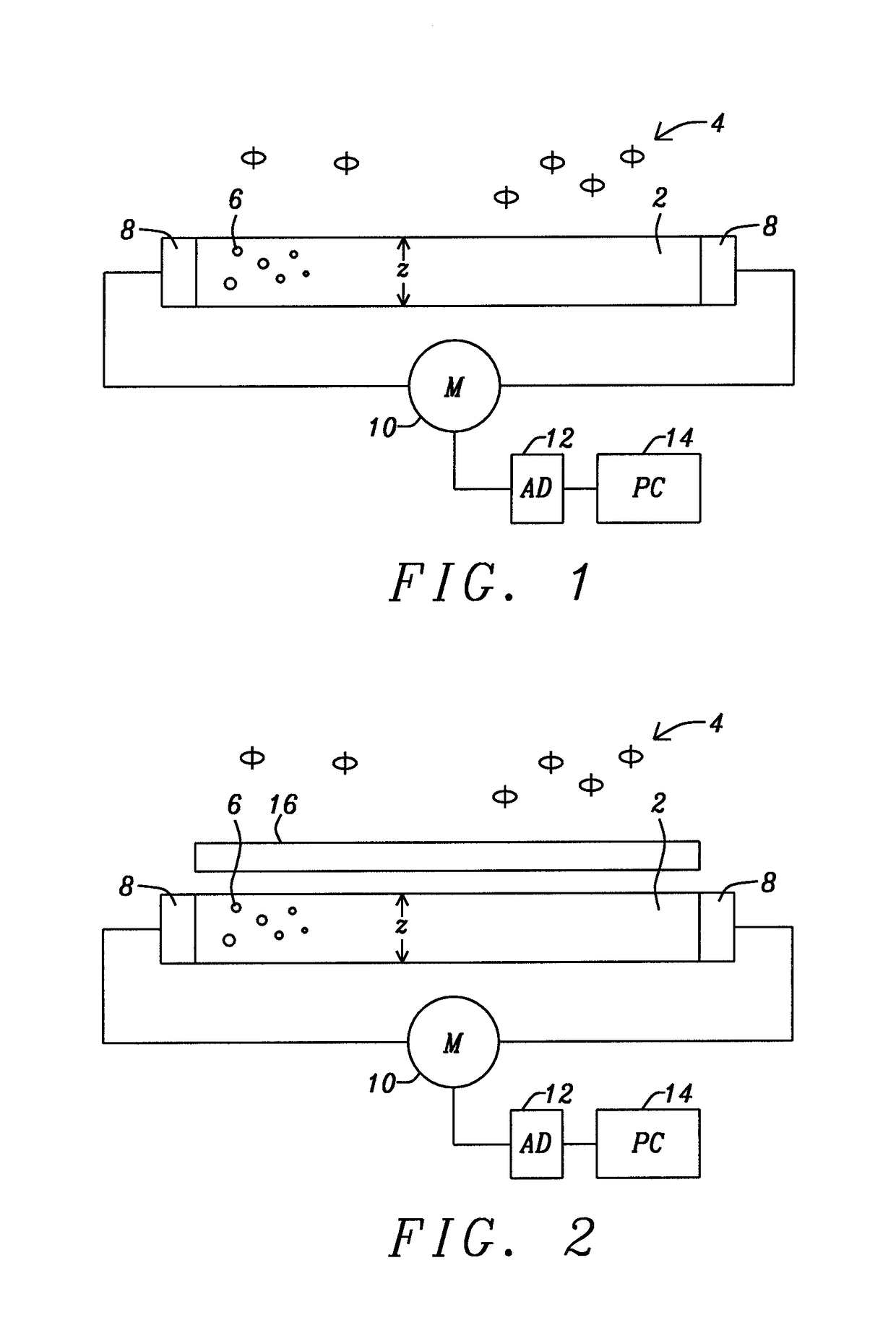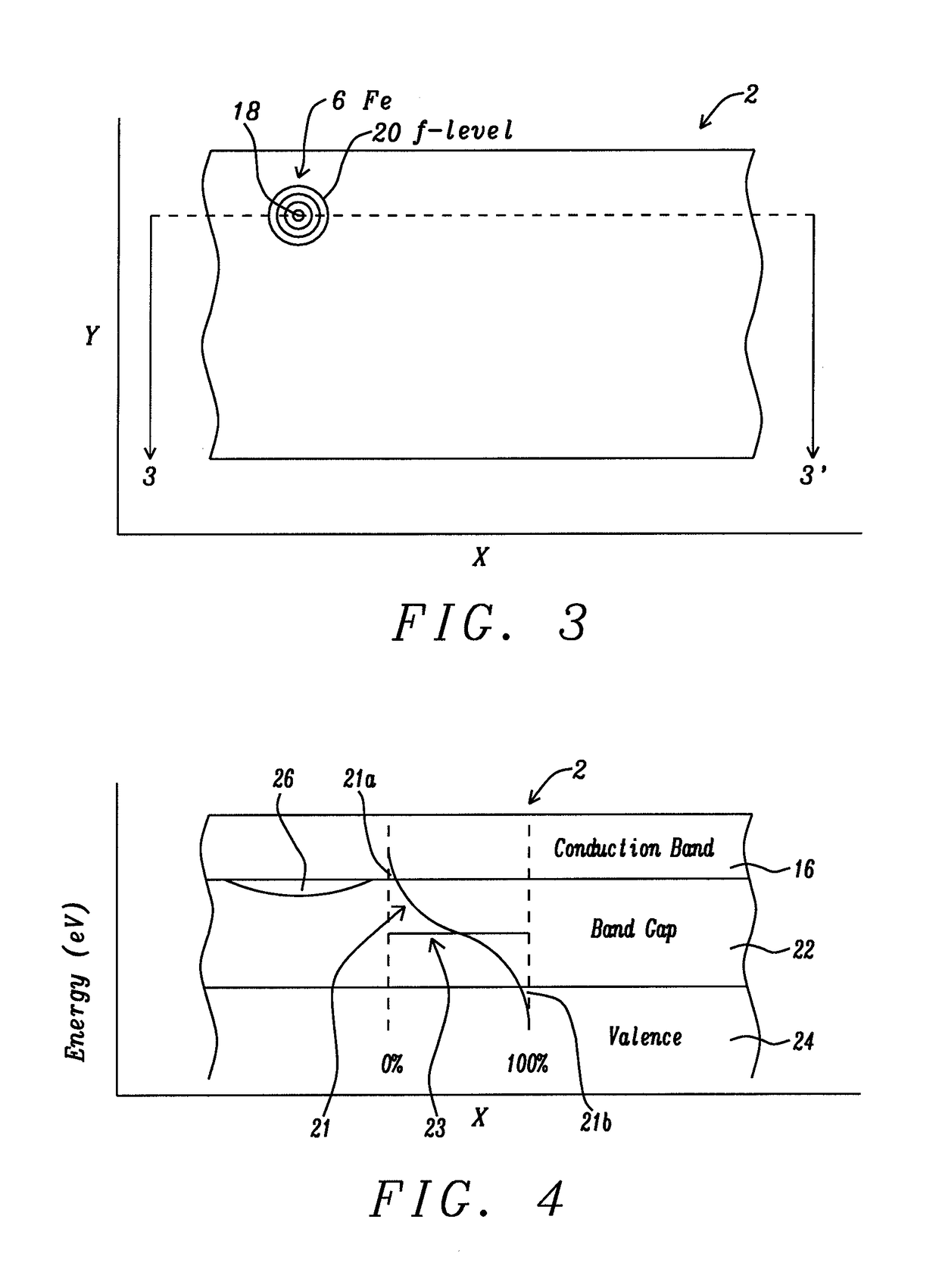Solid State Structure and Method for Detecting Neutrinos
a solid state structure and neutrinos technology, applied in the field of solid state structure and method for detecting neutrinos, can solve the problems of paradox or contradiction, increase or decrease in conductivity or resistive, and cannot address the use of the kondo effect for detecting neutrinos, etc., and achieve the effect of increasing conductivity or decreasing resistiv
- Summary
- Abstract
- Description
- Claims
- Application Information
AI Technical Summary
Benefits of technology
Problems solved by technology
Method used
Image
Examples
Embodiment Construction
[0034]The method for making these neutrino detector devices is now described in more detail with reference to the FIGS. 1-6 listed above. The neutrino device and the instrumentation for measuring and storing the data is described using separate electron equipment, but for single crystal Si substrates the measuring devices can be used to integrated in with the current integrated semiconductor devices on the same silicon substrate.
[0035]Referring first to FIG. 1, a cross sectional view of a neutrino detector is shown composed of a semiconductor substrate 2 with magnetic doped sites 6. The thickness of the substrate is labeled Z. The semiconductor substrate is preferably silicon (Si) and the magnetic sites are preferably iron atoms (Fe). One of the Fe sites is depicted as 6 in FIG. 1. Also depicted is a neutrino flux 4 impinging on the detector 2 from an external source such as from the sun, nuclear reactors, particle accelerators or the Cosmos. One method of forming this Si / Fe alloy i...
PUM
 Login to View More
Login to View More Abstract
Description
Claims
Application Information
 Login to View More
Login to View More - R&D
- Intellectual Property
- Life Sciences
- Materials
- Tech Scout
- Unparalleled Data Quality
- Higher Quality Content
- 60% Fewer Hallucinations
Browse by: Latest US Patents, China's latest patents, Technical Efficacy Thesaurus, Application Domain, Technology Topic, Popular Technical Reports.
© 2025 PatSnap. All rights reserved.Legal|Privacy policy|Modern Slavery Act Transparency Statement|Sitemap|About US| Contact US: help@patsnap.com



